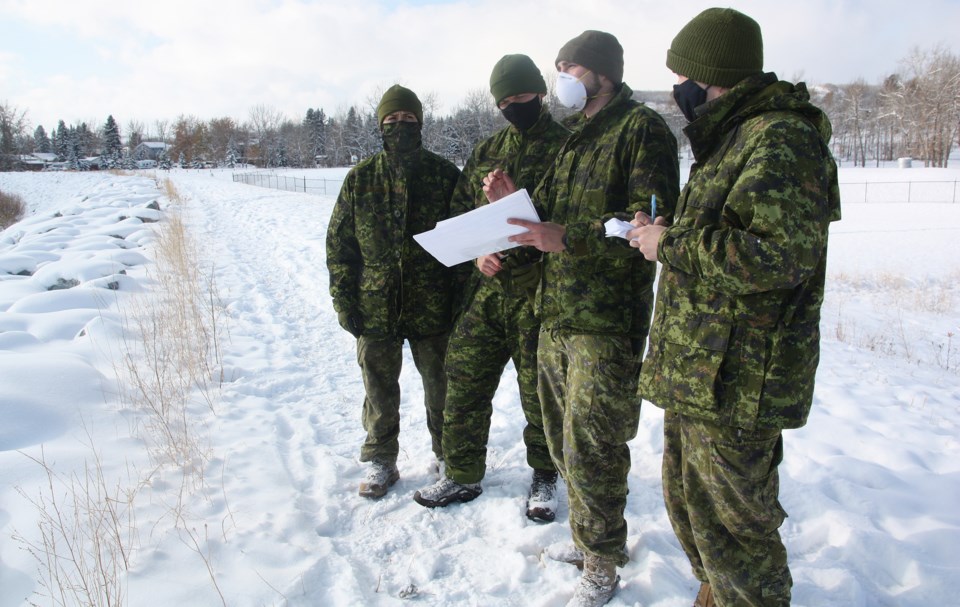Turner Valley residents can rest easier.
It turns out that Decalta Road bridge over the Sheep River is a good one to defend in the event enemy forces wanted to invade the community from the northeast.
“We were assessing everything around here,” said Cpl. Andrew Rudnyk of the Calgary Highlanders during a training session at Riverside Park in Turner Valley. “For example, the viability of the bridge.
“What kind of weight it could take, how wide is it, could a tank roll through it or not.
“As well as defensive positions in case we had to hold the spot.
“How would we set things up — we were taking pictures, notes, we have special assessment sheets that we have which have checklists to make sure we have everything...”
Not to worry. Turner Valley is not in imminent danger of attack. It was a training session as if Turner Valley was in the fictional foreign country of Atropia.
“This is just general training with an additional amount of depth,” Rudnyk said. “During orders we would state the general situation, the goals we are trying to achieve, what the enemy is doing, this is an extra bit of realism.”
The exercise involved bridge assessment.
“Bridge assessment is not something we have done too much of, so this is extra useful for us,” Rudnyk said. “Splitting us up and having us go to all of these different bridges in the Calgary area to assess is very new and it's very useful training.”
The Decalta Road bridge is a good one with a good location.
“This would be great spot to defend,” Rudnyk said while standing on the southwest side of the Sheep River. “The terrain around here is so rocky (along the river) a tank would struggle to get up some of the hills.”
And if need be, the Highlander crew considers the option of making the bridge impossible to cross.
“We could blow it up,” Rudnyk said with a chuckle when asked. “That is part of the procedure we have – if we do need to blow it up to deny transportation, we could.
“We do have a specific report to say ‘where we would blow it up, the structural integrity of the bridges... specific locations where you want to demolish it that would make it more difficult to rebuild.”
And as it turns out, a tank could not cross the bridge. A tank weighs about 60 tons - the maximum, according to a sign just before the bridge, is five tons, Rudnyk explained.
The Highlanders often train at Wainwright or near Ghost Lake at a cadet camp. These days, Highlanders are spread out across southern Alberta for training to keep the number of members involved down to fight public enemy no. 1 — COVID-19.
“We are taking every opportunity we have to make sure we are separate,” Rudnyk said. “Right now, we are looking at creative ways to do our training.”
There were four Highlanders at Riverside Park, Rudnyk and Pte. Gabriela Celis-Guevara, Pte. Seamus MacNeil, and Pte. Jakob Fushtey.




